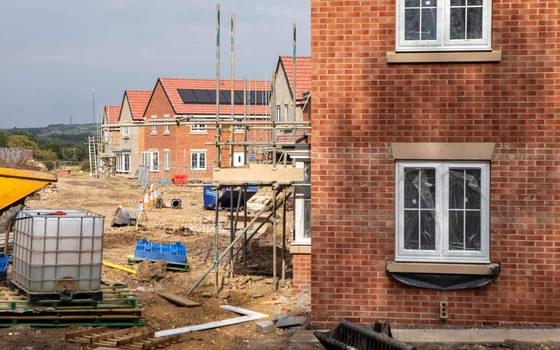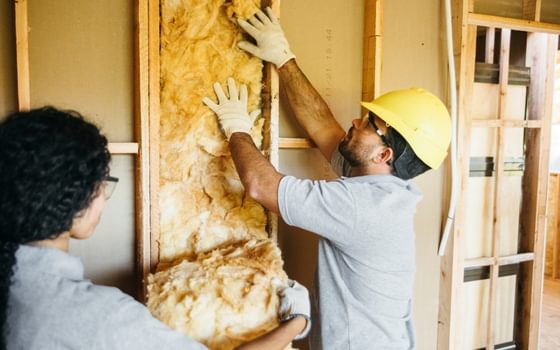4 things the Government must do if it really wants to boost affordable housing
Any investment or change in policy must be driven by what communities actually need
25 October 2017
Theresa May’s conference speech was trailed as the start of a new council house building ‘revolution’, but fell far short of offering the commitment or investment that this would require.
Over the weekend, there was yet another round of headline-hitting government proposals for solving the housing crisis: ‘the biggest barrier to social progress in our country today’. On the Andrew Marr Show, Communities Secretary Sajid Javid seemed to suggest that a step change in Government policy may be on the cards: scaling up borrowing to build homes (although the Chancellor has since put that commitment in doubt). But what exactly did Javid suggest? And will it provide the change we need to fix our broken housing system?
Despite the flurry of headlines saying that Javid had broken from years of Government policy by promising to ‘borrow billions to build homes’, on closer inspection it becomes apparent that he had actually avoided committing to very much at all.
Instead, what he appeared to be suggesting was that the government would borrow to provide infrastructure to stimulate the development of new homes. If the government also acts to ensure that a significant proportion of the increase in land values in the areas which benefit from the new infrastructure is used to fund it, then this could be an important step. But at this stage, what is actually on the cards is far from clear.
With the Budget fast approaching, just what should the government do to boost the supply of genuinely affordable homes?
- Lift the borrowing cap placed on local authorities for house building
In recent decades, the withdrawal of the public sector from housebuilding has resulted in a chronic undersupply of affordable homes. Councils are currently heavily restricted in the amount they can borrow to build – they have a debt ceiling which in many places means they are unable to borrow at all – and are unable to directly reinvest the cash receipts they receive under right to buy to build replacement homes. Undoing this and giving councils freedom to spend the money they receive from right to buy sales to build homes will be an important step forwards.
- Short-term investment for long-term gain
Proper investment from central government will be required, and targeted at low-rent homes. In the long run, social housing usually pays for itself – it’s a long-term asset, and reduces the housing benefit bill – but in the short term, investment will be needed. Since 2010 the level of funding available for building genuinely affordable homes has been dramatically decreased to a historically low level — if the government is really committed to solving the affordable homes crisis, then they must substantially increase the funding available for these homes, which are, in the long run, money-saving assets which remain in public ownership.
- Put people and communities in the driving seat
Any investment or change in policy must be driven by what communities actually need. Since the Coalition Government, most of the diminished investment to build what we normally think of as ‘social’ housing – homes to rent at rents which are affordable to those on low incomes, and provided by Housing Associations and Local Authorities – has been redirected to build so-called ‘affordable’ housing. ‘Affordable’ homes have rents that are linked to market rates – usually they are set at up to 80% of the market rent, which in many places is unaffordable to large parts of the population. If the government is serious about tackling the problem of affordability, then it must be guided by people’s real needs. That means it must direct investment and any building programmes towards building homes which are genuinely financially accessible to those on low incomes — and work with communities to do this. For too long communities have been ignored in the development process, with any so-called ‘affordable’ homes often anything but. It’s time that councils and communities were really empowered to meet housing need.
- Tackle the issue of land
Building affordable homes requires land, which is in short supply and extremely expensive. Despite this, public land is being sold as central government continues to offload surplus land assets as quickly as possible to the highest bidder. Affordable housing production is made easier if land is available at affordable prices, and so by selling at the highest price the reality is that very few of the homes being built on public land are genuinely affordable, as our research has shown. Instead, the government must start to think in a joined-up way about housing. The massive public land sell-off must be brought to a halt, and surplus public land used for genuinely affordable rental homes, built by Local Authorities, Housing Associations, or community-led groups. At NEF we are building a campaign to stop the public land sale, and working with community groups across the country to identify public land for sale, and build community-led alternatives which really produce the affordable housing that we need.
Campaigns Homes For Us
Topics Housing & land






